Master the Spanish Alphabet (With In-Depth Pronunciation Guide)
If you’re studying Spanish, you’re in luck: the Spanish alphabet uses the same Latin alphabet as English and is very simple!
Spanish is an incredibly phonetic language, meaning that it is pronounced exactly as it is written. This makes it much easier than English, which often has a lot of spelling and pronunciation rules and exceptions. Let me tell you all about it
Table of contents
- The Spanish Alphabet
- Spanish Vowels
- Spanish Consonants
- How to Pronounce Spanish C
- How to Pronounce Spanish G
- How to Pronounce Spanish H
- How to Pronounce J in Spanish
- How to Pronounce Spanish Ll and Consonant Y
- How to Pronounce Spanish Ñ
- How to Pronounce Spanish Q
- How to Pronounce Spanish R
- How to Pronounce Spanish X
- How to Pronounce Spanish V
- How to Pronounce Spanish Z
- How to Use the Spanish Accent Mark
- How to Keep Learning Spanish
The Spanish Alphabet
In Spanish, the alphabet is called el alfabeto, and each letter is called la letra. The Spanish alphabet has 27 letters – only one more than English!
They are as follows:
Letter (Spanish Name)
- a (a)
- b (be, be alta, be grande, be larga)
- c (ce)
- d (de)
- e (e)
- f (efe)
- g (ge)
- h (hache)
- i (i, i latina)
- j (jota)
- k (ka)
- l (ele)
- m (eme)
- n (ene)
- ñ (eñe)
- o (o)
- p (pe)
- q (cu)
- r (erre)
- s (ese)
- t (te)
- u (u)
- v (uve, ve, ve baja, ve chica, ve corta, ve pequeña)
- w (uve doble, ve doble, doble uve, doble ve, doble u)
- x (equis)
- y (i griega, ye)
- z (zeta)
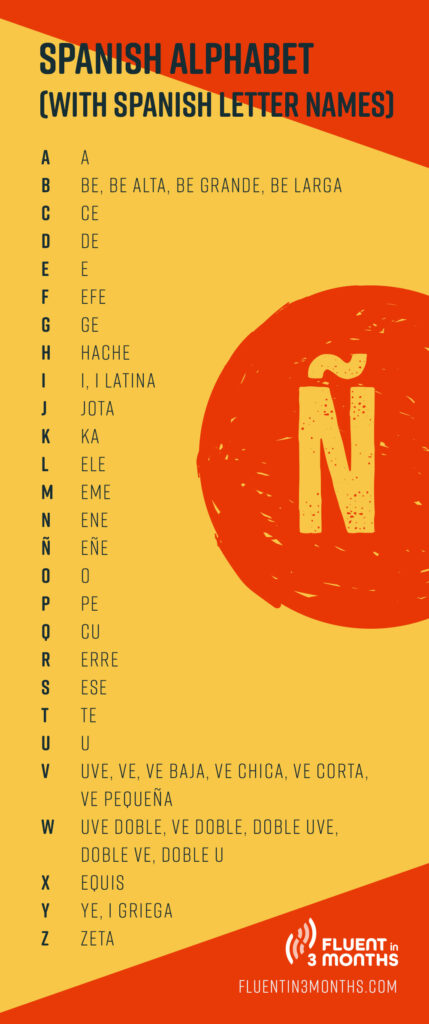
You may be surprised that some letters have multiple pronunciations. I’ll explain B and V later, but let me cover a couple others now:
- W: In a lot of Latin American Spanish, speakers often call W doble ve, ve doble, or doble uve. However, some Central American countries, like Mexico, or Colombia have been influenced by the English name for W and call it doble u. On the other hand, Spaniards usually call it uve doble.
- Y: Y is very often called i griega (“Greek I”)- – this also distinguishes it from I, sometimes called i latina (“Latin I”). But the simplified ye name for Y is becoming incredibly standardized in Latin America.
To help you learn, you can listen to the Spanish alphabet song. The popular children’s TV show Sesame Street actually made a version of this. Check it out:
You’ll notice a lot of similarities and also a lot of differences with the English alphabet. Let me explain some of the most important aspects to pay attention to.
Spanish Vowels
Unlike English or French, Spanish vowels have only one possible pronunciation. It also corresponds with the IPA, or International Phonetic Alphabet.
- A is pronounced /a/, like in “all.” An example is manzana (“apple”).
- E is pronounced /e/, like in “end.” An example is elefante (“elephant”).
- I is pronounced /i/, like the “ea” in “eat.” When Y is a vowel, it is pronounced the same as I. Examples are isla (“island”) and soy (“I am”).
- O is pronounced /o/, like in “orange.”An example is hola (“hello”).
- U is pronounced /u/, like the “ou” in “soup.” An example is usar (“use”). The only exceptions are when U comes after G or Q or is followed by an E or I, like in guerra (“war”) or queso (“cheese”). In these cases, the U it is silent. However, it is pronounced if it has an umlaut, or two dots, over it, like in vergüenza (“embarrassment”). This umlaut is called diéresis in Spanish. But don’t worry, there are relatively few words like this!
Easy, right?
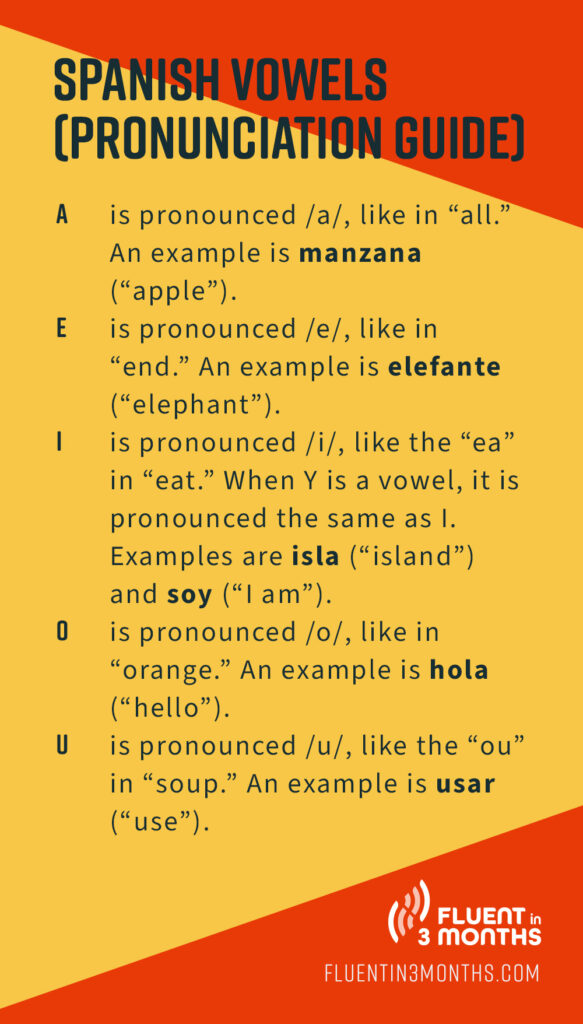
Spanish Consonants
There is more to explain about Spanish consonants – probably because there are many more of them. But don’t worry, they’re not too hard either.
Luckily, there are many consonants and consonant combinations in Spanish that are pronounced very closely to English. These include B, C, Ch, D, F, G, K, L, M, N, P, S, T, W, X, and Y. I will explain these shortly! Just note that most Spanish consonants are voiceless. That means you pronounce them without a puff of air, and your tongue often touches the top of your teeth.
In fact, W and K are rarely used in Spanish. They are mostly for foreign loanwords like karate and kiwi. That means you don’t really need to think about them at all!
Now let me explain some differences between English and Spanish pronunciations for some of these consonants.
How to Pronounce Spanish C
The letter C has some of the most variations in pronunciation. In most cases, it is pronounced the same as a hard C or K sound like in English. An example is carro (“car”).
However, when it is before an E or an I, it changes. The pronunciation depends on which dialect of Spanish the speaker uses.
If the speaker is from Central and Northern Spain, it’s pronounced like a voiceless “t” in English (like “thing”). But if the speaker is from most other regions, especially Latin America, it will be pronounced like an S. So the word ciudad (“city”) might be pronounced like “thiudad” or “siudad,” depending on the accent!
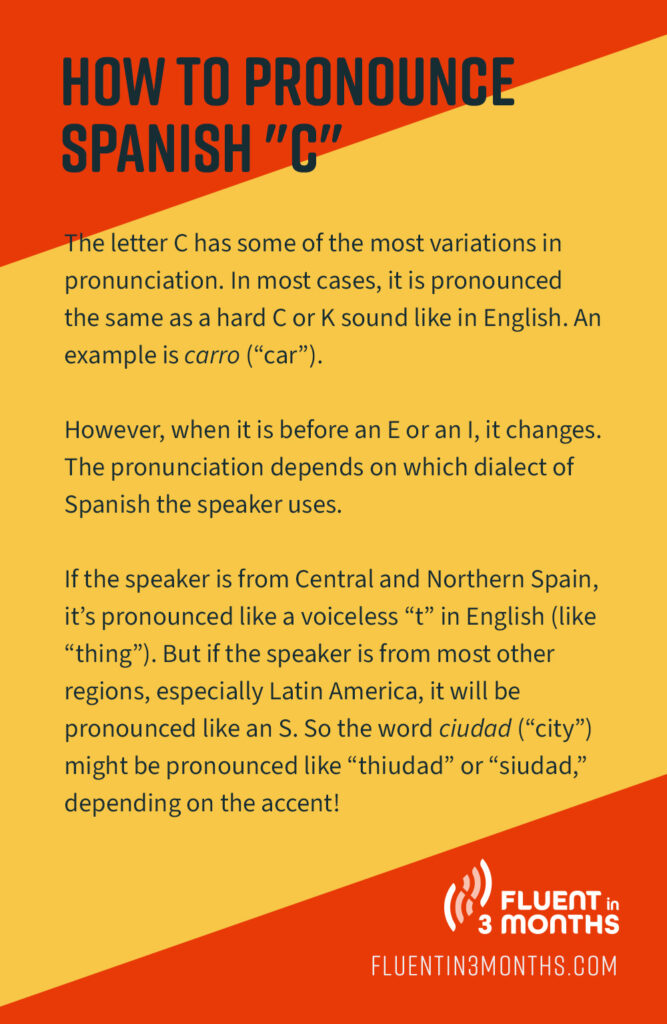
How to Pronounce Spanish G
Usually, G is pronounced like a hard English G, like in gate. An example is gato (“cat”). But similar to C above, if an E or I comes after G, it softens to an H sound, like in “house.” So general (“general”) is spelled exactly as in English, but is actually pronounced like “heneral”!
Also, remember how the letter U might change if it’s sandwiched between a G and either E or I? Well, this affects G’s pronunciation also! In these cases, the hard G sound remains, like in guerra (“war”) noted above.
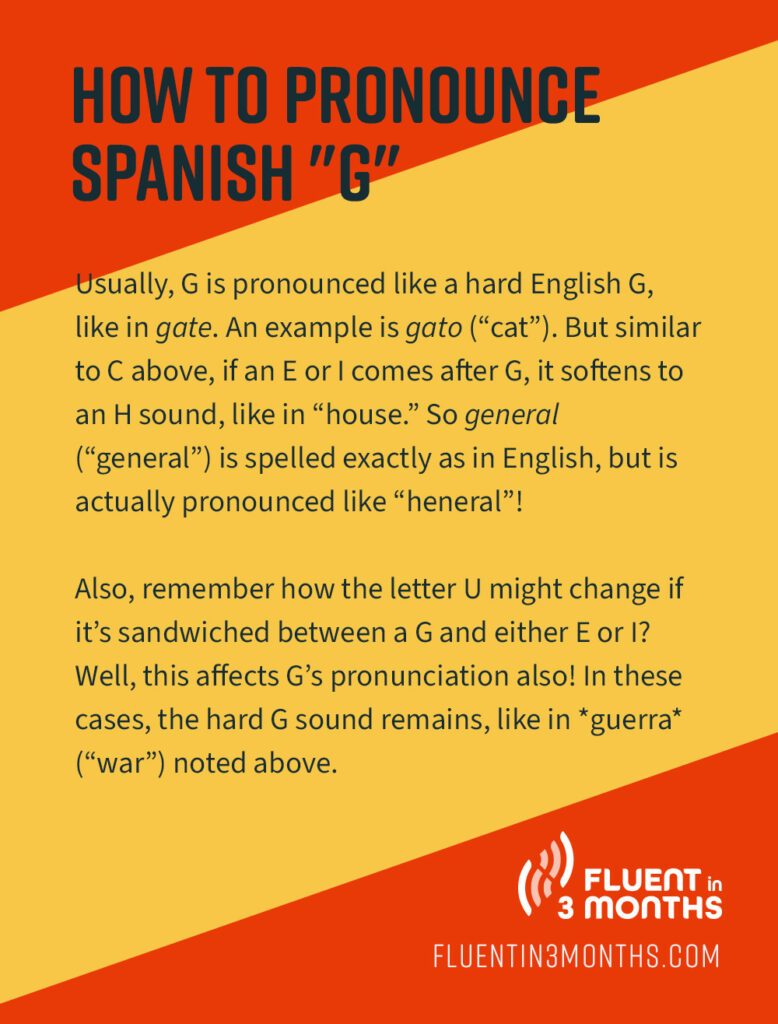
How to Pronounce Spanish H
How do you pronounce H in Spanish? Well, unless it’s combined with other consonants, like Ch, you don’t! That’s why when you say hola (“hello”) in Spanish, you say it like “ola”!
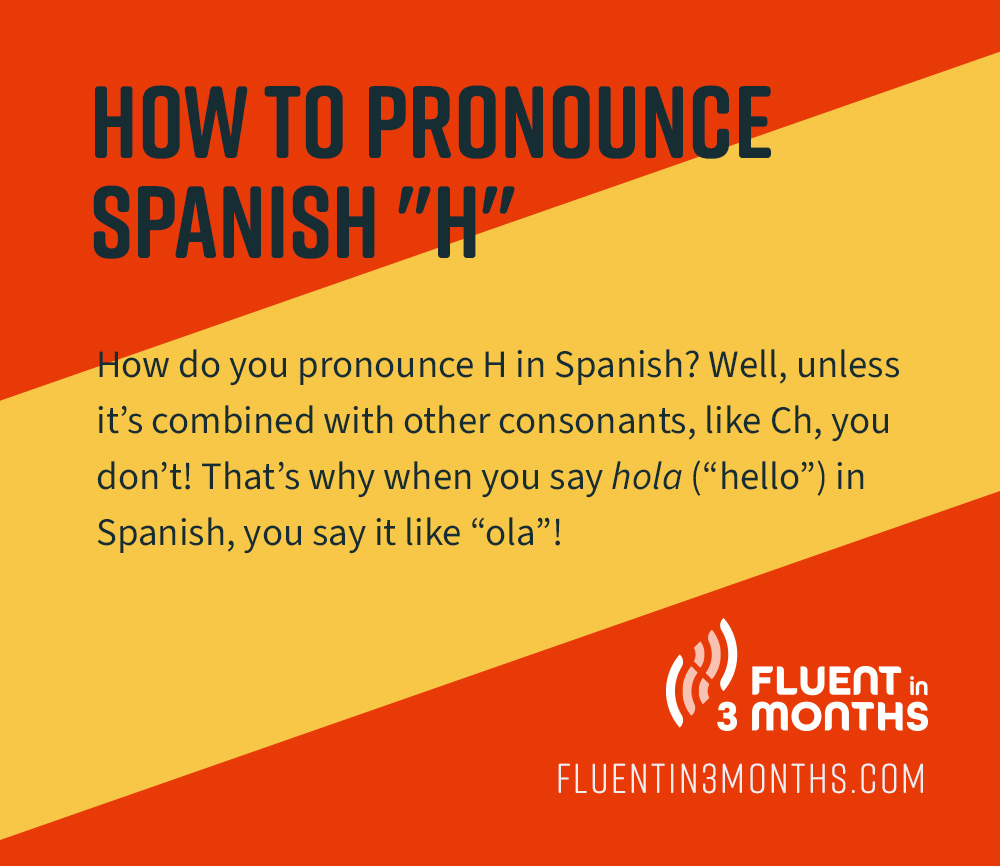
How to Pronounce J in Spanish
In most dialects of Spanish, the J is pronounced like an H (as in “house”) in English. So the word jugar (play) is pronounced like “hugar”.
But in most parts of Spain, it is often pronounced stronger and more from the throat. It actually reminds me a bit of some J sounds you would hear in Arabic and is perhaps influenced by it, being right across the Strait of Gibraltar!
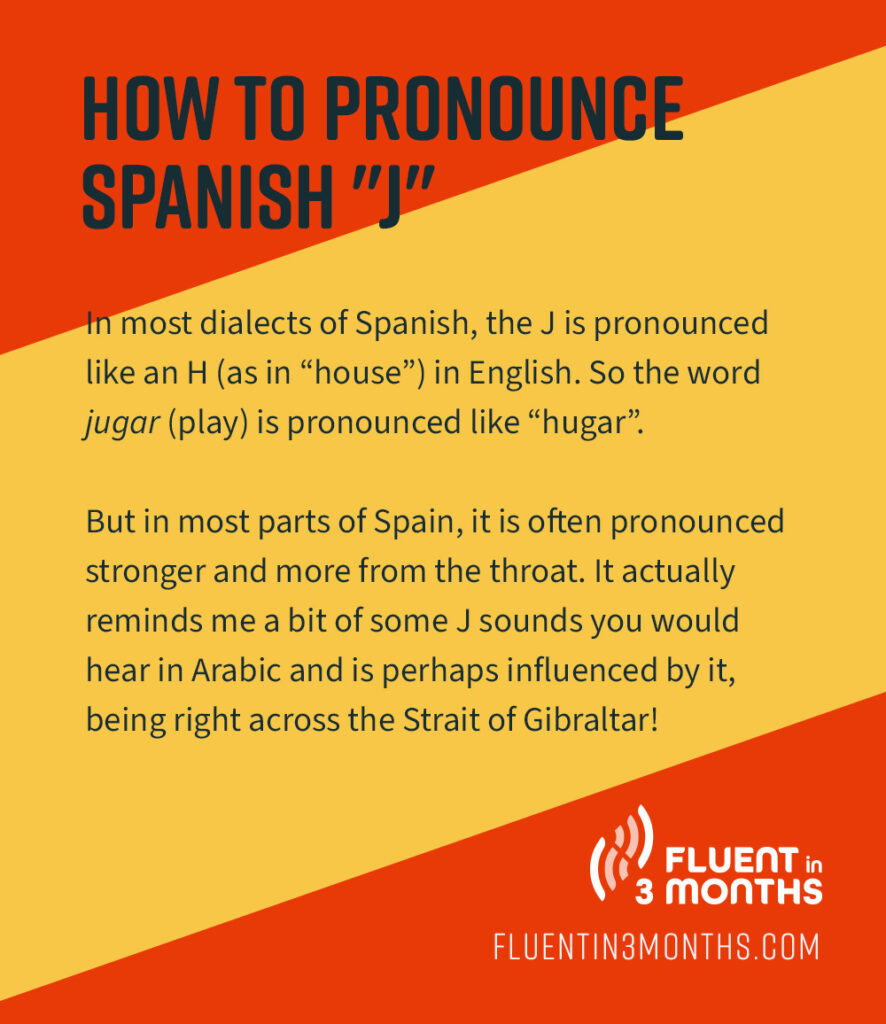
How to Pronounce Spanish Ll and Consonant Y
Ll is a consonant cluster that has its own pronunciation in Spanish. None of them sound like the letter L, though. Again, how you pronounce it depends on what dialect of Spanish you’re speaking!
In most of the Spanish-speaking world (think Spain and most of Central and South America), it’s pronounced like a hard Y sound, like in “yogurt.” So lluvia (“rain”) is most often pronounced like “yuvia.” That’s also why ya (“already”) is pronounced similar to the English sound. This is what most students learn first and encounter the most.
On the other hand, in regions of some Spanish-speaking countries, Ll and Y might alternatively be pronounced like a soft J sound in English or like the soft “sh” sound in “treasure.” However, this is not standard in any one country.
Actually, the most famous pronunciation change belongs to Spanish as spoken in parts of Argentina and Uruguay. There, Ll and Y are pronounced like Sh in English. So lluvia (“rain”) sounds like “shuvia”, and ya (“already”) sounds like “sha”!
How to Pronounce Spanish Ñ
You may have noticed that Ñ is the additional letter in the Spanish alphabet that does not belong to English. The squiggly line on the top is called a tilde, and the name was brought into English from Spanish.
The tilde may look intimidating, but don’t worry. It’s actually very simple to pronounce! It’s basically like a “ny” sound, like in “onion” or “lanyard.” Actually, have you ever drunk a piña colada? Now you know that it is written with the tilde in Spanish, and that’s why it has an “ny” sound!
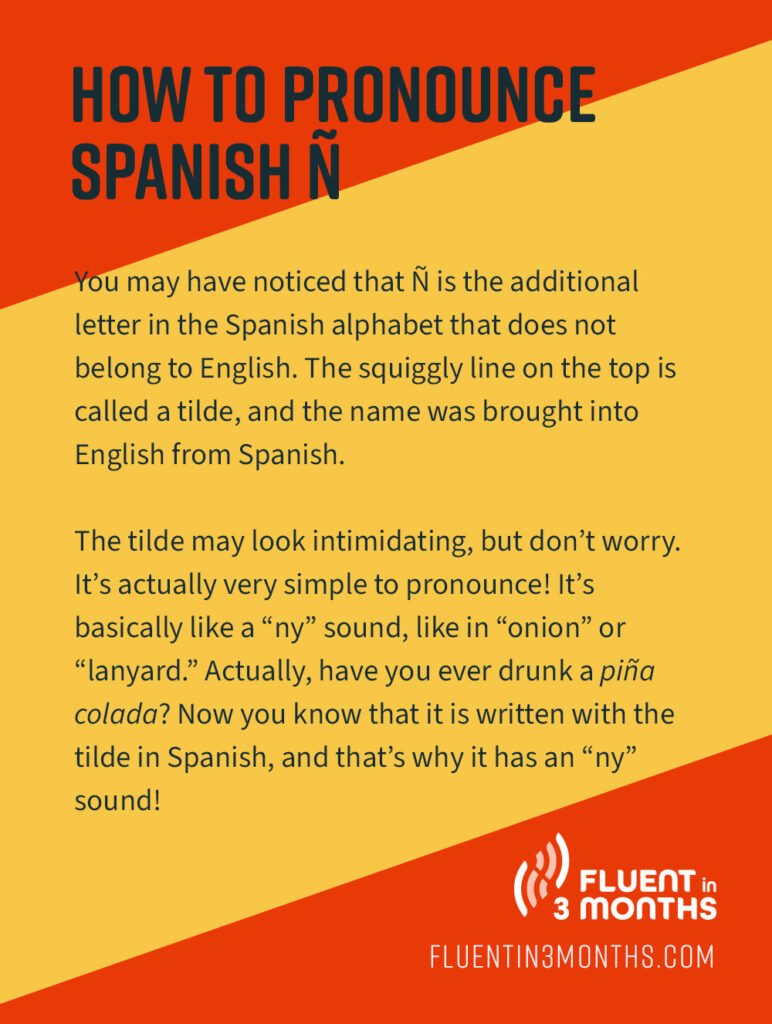
How to Pronounce Spanish Q
Q is a very simple sound in Spanish. It is always pronounced like a hard K sound and can only come before a U + E or U + I. So you’ll find words like queso (“cheese”) and quiero (“I want”), but never qeso or qero!
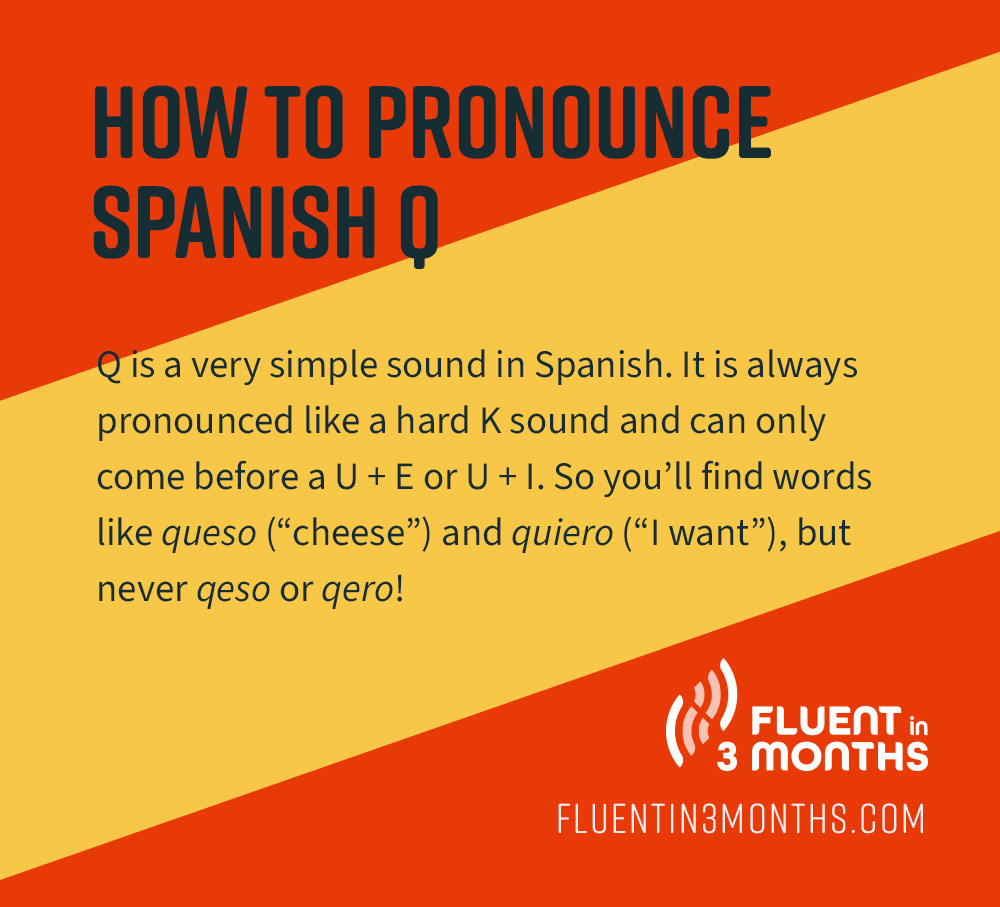
How to Pronounce Spanish R
R is probably the letter most English speakers have difficulty with. This is because the R is always rolled in Spanish, and Spanish has specific rules for how much it is rolled.
When a single R comes in the middle or the end of a word, it is usually rolled once. (Some people say it is “flapped” instead.) Examples of this include letra (“letter”) and quiero (“I want”). Some people compare it to something in between an L and an R, or like the “dd” in English “ladder.”
R becomes more tricky when it comes at the beginning of a word or as a set of two Rs (called erre doble). Here, it is rolled or “trilled” longer than the examples above. Examples of this are correr (“to run”) and rumba (“rumba”). This also often happens when R follows an L, N, S, or Z, like the first R in alrededor (“surrounding”).
Don’t worry – it took me about a year of learning Spanish to finally be able to roll my R’s! Sometimes it’s just a matter of time and practice. We also have an article all about how to roll your R’s for extra help!
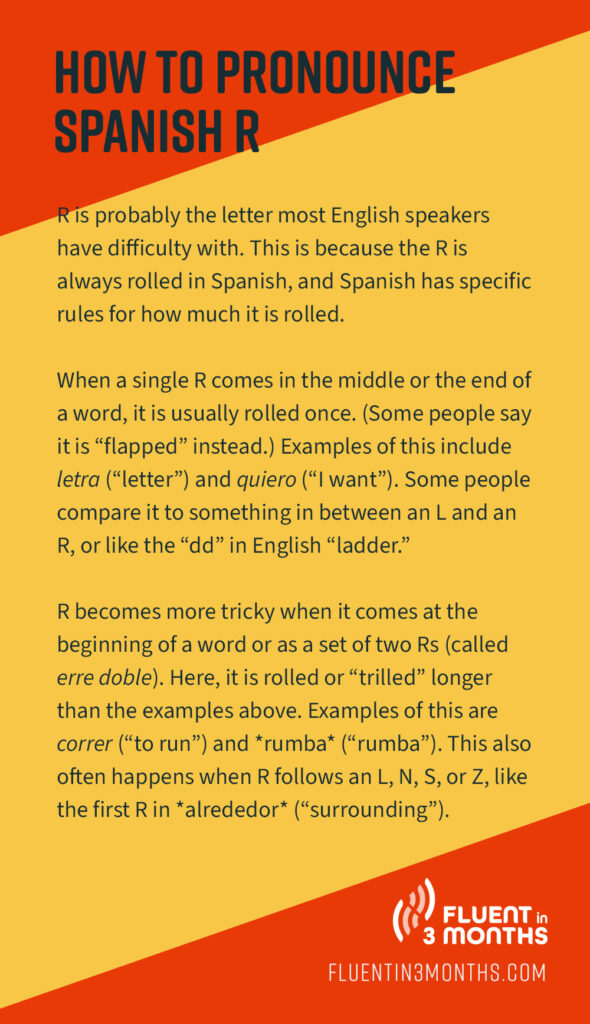
How to Pronounce Spanish X
Despite being quite uncommon in Spanish, X has a lot of possible pronunciations. This is often due to influence from other languages. Before a consonant or between vowels, it’s usually pronounced like a “ks” sound as it is in English. Examples are taxi (“taxi”) and extremo (“extreme”). However, when it starts a word, like in xenofobia (“xenophobia”), it is pronounced like an S.
But in some words derived from indigenous languages of the Americas, it takes on a different pronunciation. In words coming from Nahuatl, it’s pronounced like a strong H sound. That’s why the Spanish pronunciations for places like México and Oaxaca are pronounced with H sounds, not English “ks” sounds! In words from other languages, like the name Xiomara, it’s pronounced like an S or Sh sound.
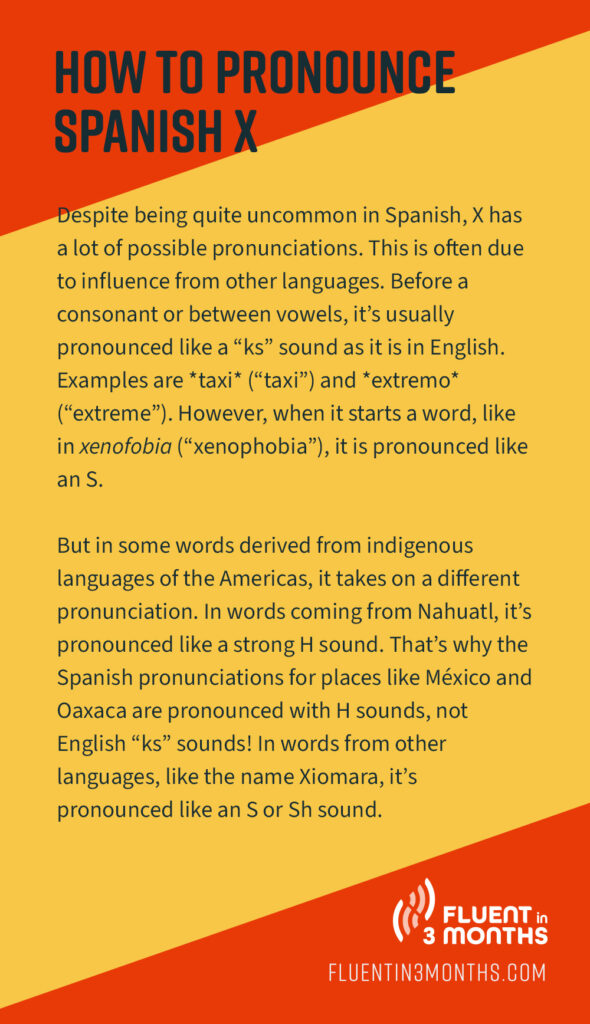
How to Pronounce Spanish V
The pronunciation of V depends on where it is located in a word. At the beginning of a word or after an M or N, it’s pronounced like a B sound. So vamos (“we go”) sounds like “bamos.”
I’m sure you noticed in the alphabet above that B is called be and V is called ve, but the former might be called be alta/grande/larga (“tall/big/long B”), and the latter might be called ve baja/chica/pequeña/corta (“short/small V”). This is because since they both start the sound, they sound practically identical, and the adjective can help distinguish between the letters. The adjective used to distinguish B and V, if needed, usually differs from country to country, but Spanish speakers everywhere will usually understand you, whichever you choose.
However, when a V comes in the middle of a word, it’s pronounced like a mix between a V and a B. So the word vivir (“to live”) has two types of V sounds in it!
How to Pronounce Spanish Z
Z in Spanish is usually pronounced the same as the C in ce or ci sounds as explained above. So in most of Spain, it’ll sound like a Th, but in Latin America, it’ll sound like an S. An example is paz (“peace”).
How to Use the Spanish Accent Mark
You may notice that Spanish uses an acute accent mark (´). Its use is simple: Whenever you see a letter with an accent mark, that’s where the stress is! That’s why águila (“eagle”) is pronounced like “Aguila” rather than “aGUIla,” and jamón (“ham”) is pronounced like “jamON” rather than “JAmon.”
This accent mark can be very important, differentiating words like tú (“you”) from tu (“your”) and sí (“yes”) from si (“if”). Add some extra emphasis to words with the accent marks.
You can also check out our complete guide to Spanish accent marks covering the acute accent mark and rules for stress, the tilde, and the diéresis for more information!
How to Keep Learning Spanish
So now that you’ve learned how to pronounce Spanish letters, what should you do next? Try building your vocabulary and learn some Spanish grammar. With the alphabet mastered, you’ll be reading, writing, speaking, and listening well in no time. Good luck!

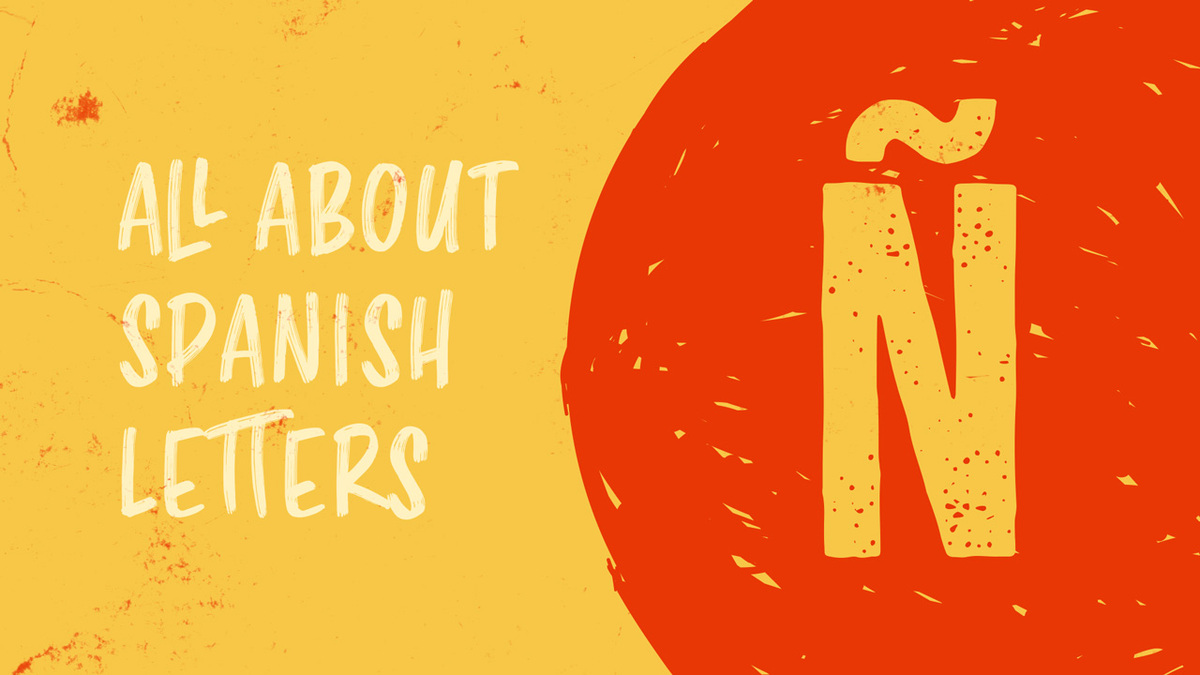

Social